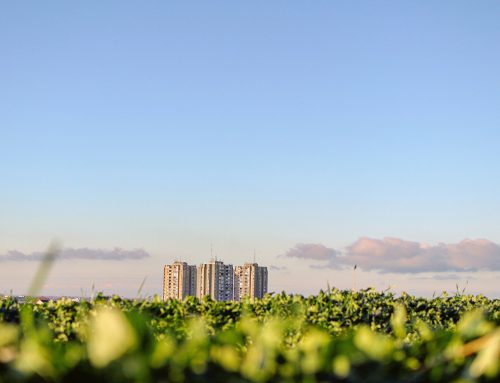 Environmentally sustainable and thermally comfortable housing has a reputation for being too costly to implement. A reputation that is unfounded according to Dr Rajan Rawal, Senior Advisor at centre for advanced research in building science and energy (CARBSE) and Professor at CEPT University.
Environmentally sustainable and thermally comfortable housing has a reputation for being too costly to implement. A reputation that is unfounded according to Dr Rajan Rawal, Senior Advisor at centre for advanced research in building science and energy (CARBSE) and Professor at CEPT University.
“Generally, there is a myth that the moment you start looking at energy code, you will incur a certain amount of additional capital cost. And through the use case, we demonstrated that it’s not true. You do not have to add money to make it compliant,” Dr Rawal said.
CEPT University, in partnership with GBPN, undertook a series of research projects to inform how best to tackle the decarbonisation of the residential building sector in India and the results demonstrate that improvements are possible without sacrificing the bottom line.
The research showed, through a series of case studies based on existing affordable housing projects in Ahmedabad, that contextual design decisions resulted in better living and environmental outcomes.
Success Stories key for acceptance of Energy Efficient Buildings
Dr Rajan Rawal said that case studies of success stories were now needed to gain momentum and build confidence among the builders that affordable housing can be thermally comfortable, energy efficient and affordable at the same time.
“Basically, our research was demonstrating that without changing any policy regime drastically, one can intervene and plug the sustainable building codes as a part of the existing policy.”
Dr Rawal, through his extensive research and work says that the capacity, knowledge and the desire to be more environmentally sustainable already exists within the building sector of India. Instead, he says what the industry lacks is consistency.
“We have taken the approach that there is no problem with the capacity, there is no problem with the intent. What we need to do is we need to create more and more use cases for people to have confidence in whatever the current policy network needs,” Dr Rawal said.
“The simpler and easier it is for developers and builders to apply policy that makes a difference to emissions and thermal comfort, the greater the momentum gained by more developers and builders adopting this approach for their future projects.”
Dr Rawal insists that the building industry of India can significantly and positively change its carbon output.
“I would say it is possible – we just need to do it,” he said.
Better Designs for Better Living Outcomes

Dr Peter Graham, Executive Director of GBPN, said that with a predicted surge in urban-dwelling residents in the coming decades, the demand for cooling will be one of India’s biggest challenges.
“India has one of the lowest access to cooling (7% to 9%) across the world, and with a tropical climate, increasing population, rising aspirations and urbanisation, these will all combine to drive a dramatic increase,” Dr Graham said.
“With this research and partnership with CEPT University, GBPN hopes to address one of India’s most pressing environmental challenges.”
GBPN has been working on the provision of support and guidelines to the sector for how to effectively – and cost effectively – implement the Eco-Niwas Samhita (ENS) 2021 building code, which regulates sustainable building practices in India. According to Mr Gautam Nagar, GBPN’s Senior Advisor, India, the research conducted by CEPT University and AEEE had laid critical foundations for the ongoing work of GBPN in India.
“As we are dealing with the affordable housing segment, we needed to ask, is it going to be affordable to apply the ENS guidelines? Do we have the right definition of affordability? That was a major question that the research leadership of Dr. Rajan helped to address,” Mr Nagar said.
“This research also influenced Gujarat to become the pilot state for a major project to develop the implementation guidelines for the ENS, as they were already progressive in their sustainability initiatives.”
He added, it was imperative to demonstrate that sustainable building measures were easy, practical and economically viable to implement because, “At the end of the day, builders are the ones that are going to take this thing up, be it a Government contract or a private contract”.
The research examined the financial impact in two key areas; building materials and building design. The two CEPT University research projects were:
- A case study of building materials that could ensure thermal comfort across multiple climate zones in India, and
- Implementing ENS to the design phase of a residential development without additional costs.
GBPN, in collaboration with local partners in India, is working to enable more success stories.
| Project Name: A Policy Strategy for Decarbonising the Building Sector: Facilitating Eco-Niwas Samhita Implementation in Affordable Housing | |
|---|---|
| Goal: | The project analysed the existing scenario through literature study, identified best practices, understood administrative procedures and conducted stakeholder consultation to evaluate feasibility of implementation of ENS in the state. In the project, the state selection criteria were defined for project execution and examined relevant administrations to integrate ENS. The city of Ahmedabad in Gujarat State was identified for pilot demonstration through the process. |
| Funded by: |  |
| Duration: | Aug 2019 – October 2020 (12 months) |
| Location: | Ahmedabad, Gujarat, India |
| Level of Government: | Local and State |
| Reports and Links: |
|
| Government Partner/s: | None |
| Research Partners: | |
| Implementation Partners: | |
| Advocacy Allies: | None |
| GBPN Experts: | Dr. Satish Kumar
Dr. Rajan Rawal Tarun Garg Anukriti Pathak |
| Related Project/s: | This is the phase-I of the project which is the initial analysis and mapping of policy and its hindrances in the state of Gujarat. This phase helped inform the phase-II of the project that focuses on creating a tool/platform for ease of implementation of code in the state of Gujarat. |





